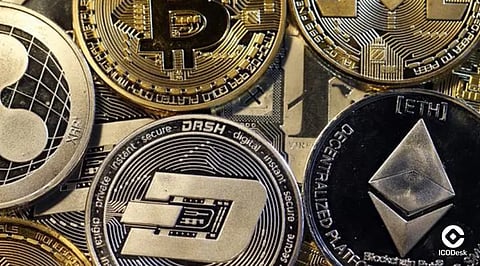

Web3 broadly refers to the next-generation Internet, where decentralized infrastructure, token economics, smart contracts, and user ownership replace much of the legacy Web2 model. The best Web3 cryptos to buy in November 2025, the key themes include:
Infrastructure & scalability: Layer-1s, layer-2s, modular chains that enable many dApps rather than just one.
Interoperability & real-world data: Bridges, oracle networks, cross-chain communication.
Utility & adoption: Projects that do more than “just a token”—they have active ecosystems (gaming, DeFi, storage, identity).
Risk environment: Regulatory scrutiny, macroeconomic headwinds, and crypto-specific execution risk.
Thus, picking a “Web3 crypto” in Nov-25 means favouring projects with strong fundamentals, real use-case traction, and capacity to scale—not just hype.
Below are five cryptocurrencies that stand out under the Web3 lens, along with their rationales and caveats.
Ethereum remains the core smart-contract platform for much of Web3 (DeFi, NFTs, DAOs).
Upgrades (e.g., rollups, scaling via L2s) are reducing fees and improving throughput.
A large developer ecosystem and strong network effect suggest it remains a “safe-ish” infrastructure bet.
What to monitor:
Gas-fee dynamics and whether high-volume apps drive up costs again.
Competitive chains are drawing devs away.
Regulatory or security risks (bugs, forks).
Summary: A foundational Web3 bet; high conviction base layer with moderate upside relative to smaller altcoins.
High-speed Layer-1 with low transaction costs; gaining traction in NFTs, gaming and DeFi.
Upgrades aimed at performance and scalability are underway.
Positioned as a potential “people’s blockchain” for mass apps.
What to monitor:
Network stability and decentralisation concerns (some past issues).
Whether ecosystem growth translates to sustainable value, not just speculative volume.
Tokenomics and inflation/issuance risk.
Summary: Higher risk/higher reward compared with ETH; good for those looking for growth in Web3 infrastructure.
Designed for cross-chain interoperability and enables independent “parachains”.
Web3’s future likely includes many specialized chains; Polkadot may capture part of that trend.
What to monitor:
Adoption of parachains and whether they deliver compelling applications (not just infrastructure).
Competition from other multi-chain/interoperability platforms.
Governance and token-holder participation.
Summary: A strategic infrastructure play—less “flashy” than gaming tokens, more fundamental.
Premier oracle network, enabling smart contracts to access external/real-world data.
As Web3 expands into real-world use-cases (finance, insurance, IoT), reliable data feeds become more critical.
What to monitor:
Whether alternative oracle solutions erode Chainlink’s dominance.
Token utility and whether growth in oracle usage drives token value.
Partnership announcements and actual on-chain usage metrics.
Summary: A niche but crucial piece of Web3 infrastructure—makes sense for a diversified Web3 portfolio.
Decentralised storage network offering an alternative to centralized cloud services.
Data storage and retrieval remain growth areas (especially with Web3 apps, DeFi, NFT metadata, etc.).
Actual usage growth (bytes stored, retrievals) and revenue stream.
Competition from centralized cloud or other decentralized storage networks.
Tokenomics: incentives for storage providers and network security.
Summary: More speculative than infrastructure giants like ETH but offers exposure to a Web3 “data-economy” theme.
Diversification is key: combining infrastructure (ETH, SOL) with interoperability (DOT) and service layers (LINK, FIL) may hedge some risks.
Risk tolerance: If very risk-averse, lean heavier into ETH or LINK; if more aggressive, increase weight in SOL or FIL.
Time horizon matters: Web3 infrastructure usually plays out over years, not weeks.
Entry timing: November might present opportunities but also possible volatility (macro, regulation, crypto cycles).
Stay on top of developments: Roadmaps, partnerships, on-chain metrics, and broader regulation.